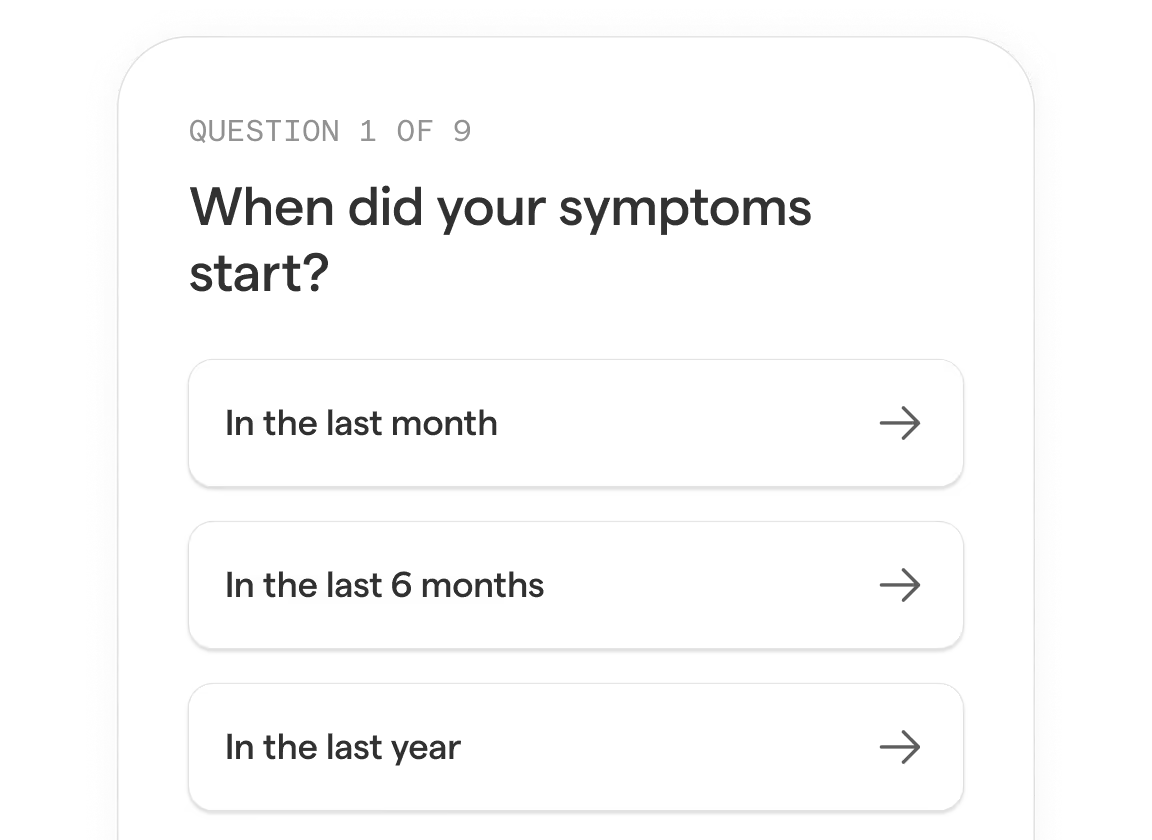Estradot is a medicated patch that contains the estradiol-17ß hormone. This hormone is very similar to the female hormone estrogen.
As such, it has a few different indicated uses:
- Relief of menopause and postmenopause symptoms relating to natural estrogen loss or surgically induced estrogen deficiency
- To help prevent osteoporosis in women that are at a higher risk, as part of a larger treatment plan (i.e., stopping smoking, increased calcium and vitamin D, regular exercise, etc.)
In women that have intact uteri, Estradot is only recommended for use alongside supplemental progestin treatments to prevent endometrial hyperplasia/carcinoma.
For more resources, including a full list of the risks and benefits of Estradot, please review the product monograph.
Estradot patches contain the estradiol-17ß hormone, which is similar to naturally produced estrogen.
These patches allow for estradiol-17ß to be absorbed slowly through the skin, which is an effective method for taking in estrogen safely.
The estradiol-17ß then replaces missing estrogen in the body, which helps raise them back towards pre-menopause levels and reduces symptoms that are caused naturally by lower estrogen levels.The amount of estrogen prescribed depends on your body’s needs.
By providing estradiol, Estradot offers relief from menopausal symptoms, slows down bone loss and may prevent bones from breaking.
What is Estradot® used to treat?
Estradot has two primary uses that it’s indicated for.
The first is as treatment for menopause and postmenopause symptoms, which it accomplishes by replacing some of the missing estrogen in the body that occurs as a natural part of these life stages.
The second is as a preventative treatment for women that are at risk of osteoporosis. Because Estradot on its own is considered a ‘light’ treatment, it’s recommended for use alongside a holistic preventative plan.
These plans can include things like taking in more calcium and vitamin D, quitting smoking (if applicable), and maintaining a regular exercise regimen.
Always use your Estradot patches as recommended by your healthcare practitioner, and never use patches more often than prescribed.
Estradot patches are rounded rectangular in shape, and the place most often recommended for placement is on the buttocks.
It’s important to avoid putting the patch on areas that clothing may rub on, and you should change the location of your patch placement each time you apply a new one (don’t use the same spot two patches in a row).
Also, you shouldn’t apply the patch to anywhere that has folded or hairy skin, or on the breasts.
How long does Estradot® last after you take it?
Most people that use Estradot won’t experience any serious side effects, but in some cases you could experience:
- Swelling of the lower legs, ankles, fingers or abdomen due to fluid retention (edema)
- Change in weight
- Vaginal bleeding or spotting
- Changes in vaginal discharge
- Headache
- Depression
- Migraines
- Dizziness
- Nausea
- Abdominal pain and swelling
- Tender breasts
- Breast enlargement
- Persistent or severe skin irritation
- Redness, rash, or itching of the skin after the patch has been removed
Less common side effects include:
- Change in libido
- Hair loss or hair growth
- Vomiting
- Lump or mass in the breast (possible sign of breast cancer)
- Uterine fibroids
- Vaginal thrush
If you start to experience any of these side effects from your Estradot patches, or other changes, be sure to talk to your healthcare practitioner. They may be able to suggest an alternative Estradot dosage or even another medication that may work better for you.
MHT is the most effective treatment for menopausal symptoms and has been shown to prevent bone loss.
In menopausal women who start appropriately-dosed MHT prior to age 60 OR within 10 years of their last period, the health benefits outweigh the risks.
Risks of MHT are considered very rare (~1 case per 1000 to 10,000 women on MHT per year) and may include:
- risks of stroke or blood clots in legs or lungs with oral estrogen (much lower risk with estrogen gel or patch)
- risks of dementia in women older than 65 years,
- risk of breast cancer (less than ~1 case per 1000 women on MHT per year)
These conditions are all rare, but they highlight the importance of having a full discussion with your healthcare practitioner; especially if you’re experiencing moderate to severe side effects.
Individualization is key, and your MHT treatment plan should be reassessed (at least) once a year to monitor your health, as well as ensure that you are on the correct dosage and formulation.
Your practitioner can help you find balance between treating your symptoms safely, and avoiding increased risks.
There are some people that shouldn’t take Estradot. These include:
- If you’re pregnant, or believe that you may be pregnant
- If you’re breastfeeding
- If you have or have ever had cancer of the uterus, breast, endometrium, or any other estrogen-dependent cancer
- If you have endometrial hyperplasia
- If you have unexplained or unusual changes in vaginal bleeding
- If you have active thrombophlebitis
- If you have or have ever had a problem with blood clots, including thrombophlebitis, deep vein thrombosis, or pulmonary embolism
- If you have or have ever had coronary heart disease, heart attacks, or strokes
- If you have serious liver disease
- If you experience migraines
- If you have vision issues resulting from blood vessel disease in the eye
- If you have porphyria (a blood pigment disease)
- If you’ve ever had an allergic reaction to estradiol or any of the other ingredients in Estradot
In addition to these concerns, there are others who should be cautious about taking Estradot. Talk to your healthcare practitioner before starting Estradot if you:
- Have a history of allergies or intolerances to other medications
- Have been diagnosed with hereditary angioedema
- Have had episodes of rapid swelling of the hands, feet, face, lips, eyes, tongue, throat, or digestive tract
- Have a history of breast disease, breast biopsies, or a family history of breast cancer
- Have experienced any unusual or undiagnosed vaginal bleeding
- Have a history of uterine fibroids or endometriosis
- Have a history of liver disease, liver tumours, or jaundice
- Experienced itching related to estrogen use or during pregnancy
- Have a history of migraine headache
- Have a history of high blood pressure
- Have a personal or family history of blood clots
- Have a personal history of heart disease or stroke
- Have phlebitis (inflamed varicose veins)
- Have a history of kidney disease or asthma
- Have a history of bone disease
- Have diabetes
- Have porphyria (a blood pigment disease)
- Have lupus
- Have gallbladder disease
- Experience depression
- Have been diagnosed with hearing loss due to otosclerosis
- Have epilepsy or other neurological disorders
- Have a history of high triglycerides or cholesterol
- Are pregnant or may be pregnant
- Are breastfeeding
- Have had a hysterectomy
- Smoke
- Have recently had surgery or require long bed rest
- Have had several miscarriages
- Have had or have hypothyroidism, or you are being treated with thyroid hormone replacement therapy
These conditions could increase your risks of experiencing negative side effects from your Estradot patches. The practitioner may be able to suggest an alternative Estradot dosage, or another medication that may work better for you.
Tell your doctor or pharmacist if you are taking or have recently taken any other medications, including prescription medications, over-the-counter medications, vitamins or herbal products. This particularly includes the following:
- anti-anxiety medicines (i.e., barbiturates, meprobamate)
- anti-epileptic medicines (i.e., phenobarbital, phenytoin or carbamazepine),
- Phenylbutazone,
- Antibiotics and other anti-infective medicines (i.e., rifampicin, ketoconazole, erythromycin, rifabutin, nevirapine, efavirenz)
- Herbal medicines (i.e., St John’s wort)
Further reading










